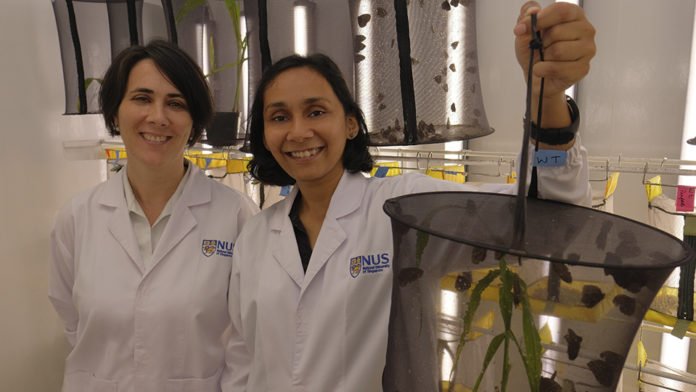Butterflies possess some of the most striking color displays found in nature. But, what is the reason behind the appearance of the dorsal wings of butterflies?
NUS scientists have successfully found the answer suggesting the gene apterous A is responsible for the appearance of the dorsal wings of butterflies. Scientists studied the expression and functions of apterous A in the African squinting bush brown butterfly, Bicyclus anynana, which has a well-annotated genome, during its wing developmental stage.
The gene apterous A has been found to assume a part in the wing development of some insect species, in functions, for example, the outgrowth of the wing and determination of the dorsal-ventral limit. The examination group thus speculated that it could be associated with separating the presentation of the two wing surfaces.
Scientists found the expression of apterous A in the butterfly’s wings and after that specifically expelled it from the genome in a quality knockout procedure to confirm its capacities in wing advancement and designing.
Ph.D. student, Ms. Anupama Prakash said, “When this gene is mutated, the dorsal wing patterns of butterflies with the mutated genome develop the same patterns as their ventral wing surfaces. This means that apterous A is involved in the determination of the appearance of the dorsal surface.”
Assoc Prof Antonia Monteiro said, “In the evolution of butterfly wing patterns, eyespots appeared on the dorsal wing surfaces of butterflies long after their origin on the ventral surfaces, but the reason for this was unclear.”
“We discovered that in the small regions on the dorsal wing surfaces where a few eyespot centers were observed, there was an absence of apterous A gene expression. This implies that the local repression of apterous A is likely to have caused eyespots to finally develop at these locations.”
The presence of the apterous A gene had an effect on sex-specific wing traits on the fore- and hindwings on the dorsal surfaces. On males’ dorsal forewings, it acts as a repressor, inhibiting the male pheromone producing organs and silver scale development. On their dorsal hindwings however, it acts as an activator, promoting the development of pheromone disseminating hairs and silver scales.
Ms. Prakash said, “Since apterous A is expressed only in cells of the dorsal surface, we can now identify dorsal-specific cells based on this gene expression. This is very useful if, for example, we want to study how a certain color develops. In some butterfly species such as the Morphos, the ventral surface is mostly brown while the dorsal surface is blue. Isolating dorsal-specific cells by using apterous A as a marker can help us study how these blue scales are developing.”
The findings were published in Proceedings of the Royal Society of London in early 2018.
